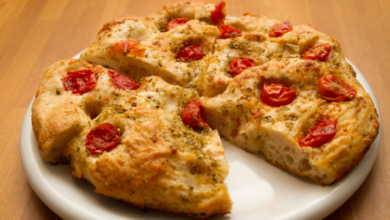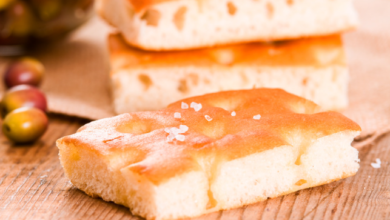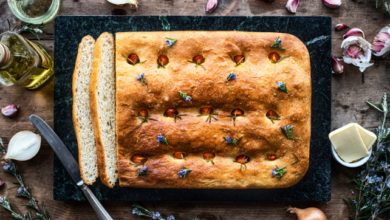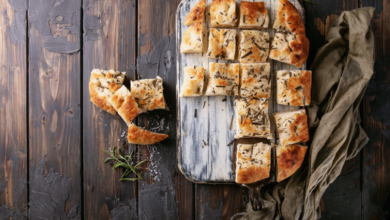Why Is My Focaccia Dough Not Fluffy? Here’s What You Can Do
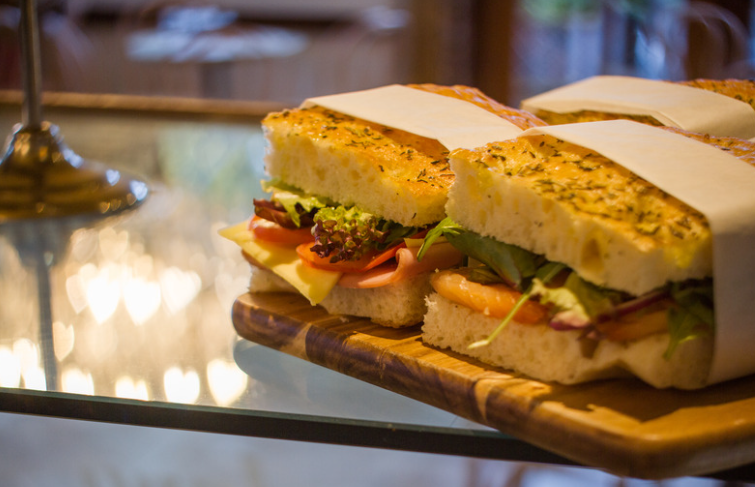
What To Know
- Proof the dough in a warm, draft-free place for at least 1 hour, or until it has doubled in size.
- Preheat your oven to the highest possible temperature (usually 500°F or 260°C) to create an intense burst of heat that will quickly set the crust and allow the interior to rise rapidly.
- Knead the dough for the recommended time only, proof it until doubled in size, and ensure the dough is not too dry.
Focaccia, an Italian flatbread known for its airy texture and crispy crust, is a culinary delight. However, achieving the perfect fluffiness can be a daunting task for home bakers. If your focaccia consistently falls short of the desired lightness, don’t despair. This comprehensive guide will delve into the potential reasons why your focaccia may not be fluffy and provide practical solutions to elevate your baking game.
Essential Ingredients
1. Yeast
Yeast is the key ingredient responsible for creating air pockets and giving bread its characteristic fluffiness. Ensure you use active yeast and proof it in warm water with a pinch of sugar before adding it to the dough. If the yeast is not activated properly, it will not produce enough gas to create the desired texture.
2. Flour
The type and quality of flour you use significantly impact the fluffiness of focaccia. Strong bread flour with a high protein content (12-14%) is recommended as it provides the gluten structure necessary for a chewy and airy crumb.
Proper Dough Handling
3. Hydration
The hydration level of the dough plays a crucial role in determining the fluffiness of focaccia. A well-hydrated dough will produce a softer and more open crumb. Aim for a dough that is slightly sticky but not overly wet.
4. Kneading
Kneading is an essential step in developing the gluten network in the dough. This process aligns the gluten strands, creating a strong and elastic structure that will trap air during the rising process. Knead the dough for at least 10 minutes until it becomes smooth and elastic.
5. Proofing
Proofing allows the yeast to ferment and produce carbon dioxide gas, which creates air pockets in the dough. Proof the dough in a warm, draft-free place for at least 1 hour, or until it has doubled in size.
Baking Techniques
6. Preheat the Oven
Preheat your oven to the highest possible temperature (usually 500°F or 260°C) to create an intense burst of heat that will quickly set the crust and allow the interior to rise rapidly.
7. Baking Time and Temperature
Bake the focaccia for 15-20 minutes, or until the crust is golden brown and the center is cooked through. Lowering the temperature to 450°F (230°C) after the initial burst of heat will help prevent over-browning and ensure an evenly baked loaf.
8. Steaming
Introducing steam into the oven during the first few minutes of baking helps create a moist environment that promotes a fluffier crumb. You can achieve this by placing a shallow pan of boiling water on the bottom rack of the oven.
Troubleshooting Tips
9. Dense Dough
If your focaccia is dense and heavy, it may be due to under-kneading, insufficient proofing time, or too much flour in the dough. Ensure you knead the dough thoroughly, proof it until doubled in size, and adjust the flour quantity as needed.
10. Soggy Crust
A soggy crust can result from under-baking or over-hydration. Bake the focaccia until the crust is golden brown and firm to the touch. If the dough is too wet, reduce the amount of water or increase the kneading time.
11. Hard Crumb
A hard crumb can be caused by over-kneading, over-proofing, or not enough hydration. Knead the dough for the recommended time only, proof it until doubled in size, and ensure the dough is not too dry.
Summary: Achieving Focaccia Perfection
Mastering the art of fluffy focaccia requires attention to detail and an understanding of the science behind bread baking. By following the tips and troubleshooting techniques outlined in this guide, you can consistently create airy and delectable focaccia that will impress your taste buds and delight your loved ones.
Common Questions and Answers
1. What is the ideal temperature for proofing focaccia?
Answer: 75-80°F (24-27°C)
2. How long should I proof focaccia for?
Answer: 1-2 hours, or until doubled in size
3. Can I use regular flour instead of bread flour?
Answer: Yes, but the focaccia may not be as fluffy
4. What can I do if my focaccia is too salty?
Answer: Add more flour or dilute the dough with water
